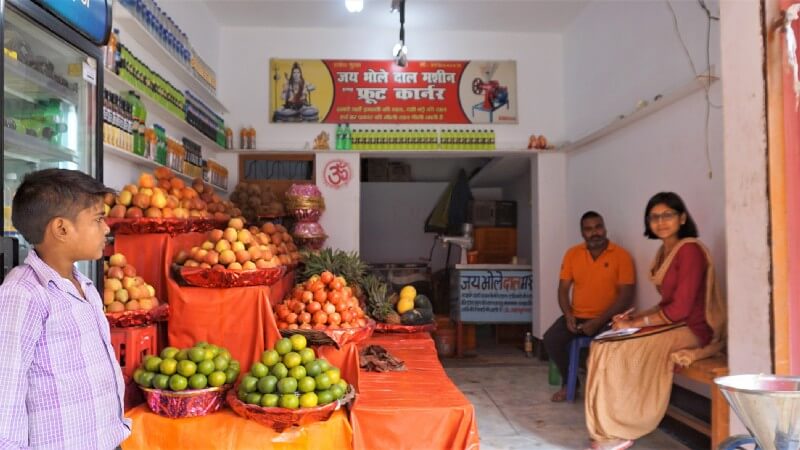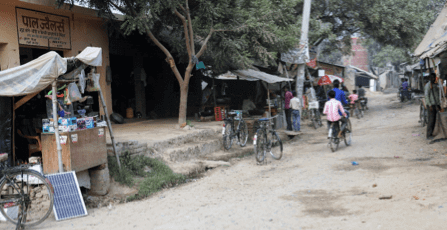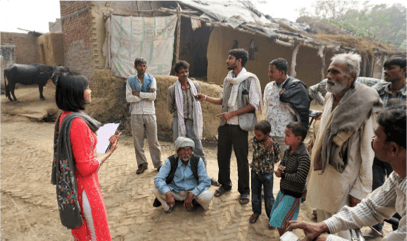Shalu Agrawal, a researcher at the Initiative for Sustainable Energy Policy (ISEP), reports from the front lines of Uttar Pradesh that decentralized renewable energy solutions are gaining popularity in rural communities
India’s recently announced Saubhagya plan aims to ensure power supply to 40 million households by early 2019, and complements another initiative, Deen Dayal Upadhyaya Gram Jyoti Yojana, to strengthen electricity infrastructure in rural areas. But having a connection does not directly translate into electricity access. According to a recent survey in six Indian states, only half of the households with electricity connections receive electricity for more than 12 hours a day. Lack of reliable electricity supply forces households to use suboptimal sources of lighting such as kerosene. According to 2012 data, 88 per cent of rural households in India use kerosene, with a majority incurring monthly expenses of INR 80 and above.
Building a grid that taps distributed solutions
Decentralized renewable solutions such as solar home systems and mini-gridscan complement government efforts to ensure 24 hour electricity access. In fact, as such solutions become affordable and accessible, kerosene is slowly losing ground, as my recent visit to Hardoi district in Uttar Pradesh confirmed. A majority of households using mini-grid connections in Bharawan, Ahirori and Pratapnagar villages have stopped using kerosene for lighting. The same is true for households having solar lanterns or solar home systems.
When asked about the use of kerosene, Shakeel Ahmed of Khandakheda village replied: “Kerosene is a polluting and dirty source of lighting, so we don’t use it. Fumes from kerosene hurt the eyes of children, if they use it for studying. It also covers the walls with soot. So, people have stopped using it and most people only use it as a back-up for emergencies.”
Going beyond lighting needs, electricity access through mini-grids also facilitates value-add services such as mobile charging and the use fans in summer, at a cost that is comparable with kerosene. For rural enterprises, such solutions can significantly contribute to productivity improvements, as vendors can use weighing machines, refrigerators, computers and printing machines, in a reliable manner.

As rural communities experience the benefits of quality and reliable power supply from solar solutions, there is an increasing demand and willingness to pay for such solutions. For instance, in Bharawan and Ahirori, village leaders highlighted the need for more mini-grids, as the existing ones are insufficient to give connection to interested consumers. Villages with and without a centralized grid connection are embracing mini-grids and other solar solutions. Smaller solutions like lanterns often provide access to electricity for the first time, while mini-grids provide certainty of power supply, particularly during the evening hours, when the centralized grid is often unavailable.

Solar mini-grids and other off-grid solutions are increasingly becoming a complementary and supplementary source of electricity for rural areas, contributing towards a better quality of life, increased productivity and rural development at large. Even though the benefits from mini-grid electricity are well documented, there exists several knowledge gaps, which pose challenges in expansion of such solutions.
First, there exists limited understanding about existing and potential electricity demand in rural communities, especially at the household and enterprise level. Second, little is known about how the awareness of and attitude towards mini-grids and other solar solutions is related to consumers’ likelihood of adopting such solutions and their willingness to pay for them. These aspects could have significant implications for the design and financial viability of such solutions and would play an important role in identifying prospective locations and future expansion strategy.
Ongoing research at ISEP aims to fill these knowledge gaps, with the goal of facilitating high-quality distributed power generation in a financially sustainable manner for ensuring last-mile electricity access to under-electrified and un-electrified rural communities.
